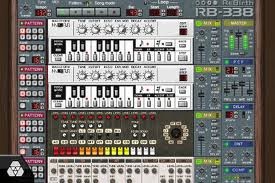I do not believe I’ve seen this before, a YouTube video intro to an upcoming conference session. It’s probably common, though more apt to come to your attention in anticipation to a “local” edtech conference.
 This week the North Carolina (My home state) ISTE affiliate is hosting its 2011 educational technology conference, NCTIES for a packed house — and it’s a short bus ride from my home.
This week the North Carolina (My home state) ISTE affiliate is hosting its 2011 educational technology conference, NCTIES for a packed house — and it’s a short bus ride from my home.
NCTIES is an anual event, which I missed last year because I had agreed to keynote a conference in Singapore for ISTE. ..and coincidentally, that Singapore conference was my first presentation where the
 |
|
The opening slide for one of the new presentations I’ll be doing at NCTIES this week. |
audience didn’t squint with confusion at the QR-Code on the opening of my slidedeck (or Prezi document). When the image appeared on that day, about 350 smart phones shot up out of the audience, each capturing through its built-in cameras, the URL embedded in the code and loading my online handouts for use during the address. I say, “coincidence,” because on Friday Jacob Standish and Timothy Smith, both of Mecklenberg Schools (Charlotte), will be doing a session called “QR Codes and Why they matter to education.”
What I’ve not seen before was an @technology_tim tweet, launched just before 10:00 PM last night,
Feb 26, 9:52pm via Twitter for Mac
Presenting at #NCTIES updating our info page! bit.ly/QRncties1 #yam #CMSk12 Who else presenting?
Click the bit.ly link in the tweet to see the YouTube video they’re using to introduce and promote their presentation. Again, this might be common, but it’s the first time I’ve seen it. I’ve often suggested that teachers might create video commercials for their classrooms or even as introductions to upcoming units of study. But I don’t think that a commercial for your conference presentation has occurred to me.
I hope I’m able to attend their session. Although I’ve not thought a lot about QR-Codes in education, the idea of hyperlinking physical objects to the digital world intrigues me.
So I guess it’s two ideas that may be reaching their time, teacher-produced video commercials and QR-Codes.






 Back to my time in the sky — just before leaving I purchased a new music app for my iPad. I have pages of music apps, most of them mocks of musical instruments, and none of them have captured much of my attention. I’m not a very good musician. The exception was
Back to my time in the sky — just before leaving I purchased a new music app for my iPad. I have pages of music apps, most of them mocks of musical instruments, and none of them have captured much of my attention. I’m not a very good musician. The exception was 
